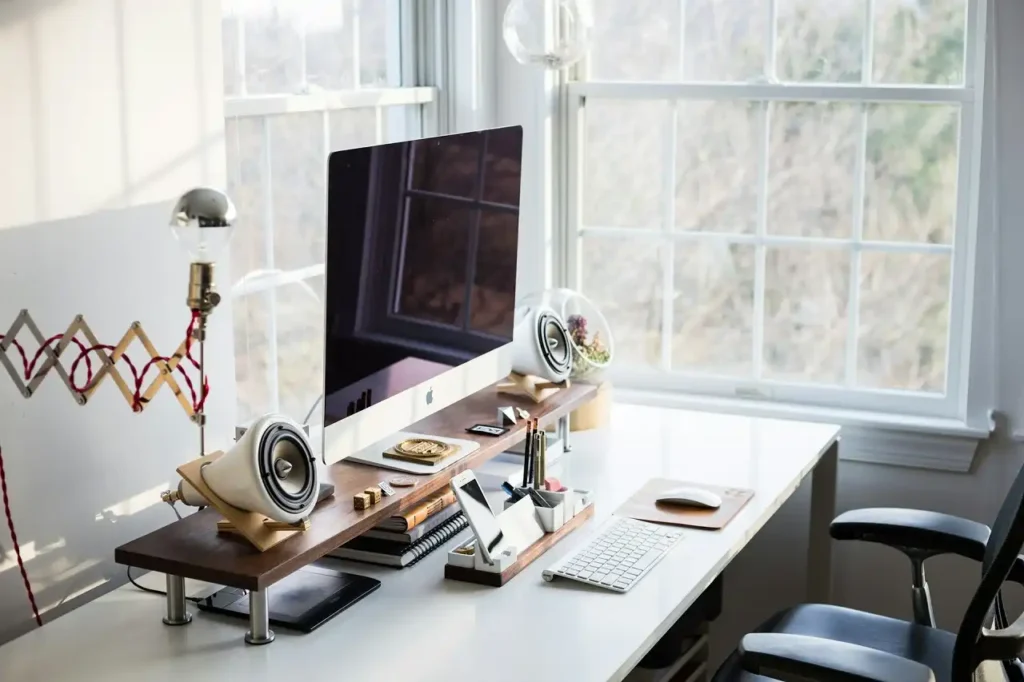Embarking on a learning journey can be as thrilling as it is demanding. Crafting a comfortable study environment is the key to transforming this expedition into a positive and fruitful experience. Just as a masterful painter requires the perfect canvas, setting, and tools to create a masterpiece, a student needs a conducive ambiance to absorb and synthesize new information efficiently. Whether you’re a student striving for academic excellence or a lifelong learner pursuing knowledge, this guide is your catalyst for developing a harmonious balance between the rigor of study and the comfort of personal well-being.
Invest in Ergonomically Designed Chairs
Ergonomic seating is the cornerstone of a study space that encourages prolonged periods of focus without the risk of physical strain. Chairs that contour to the body’s natural posture can significantly reduce back pain and increase concentration. Designed with a plain base, the innovative modular seating solutions have taken this concept further, offering soft, interchangeable components that can be rearranged to suit individual preferences. Soft seating modules, such as cushions and bolsters, can be attached or detached at will to support different sitting styles.
Additionally, look for chairs with adjustable seat height and armrests to customize your sitting position. A well-cushioned seat and backrest made of breathable fabric provide essential comfort for extended study sessions. Your comfort should be the top priority when selecting a chair for studying.
Ensure Your Study Area is Well-Lit
Adequate lighting is paramount in your study space to prevent eye strain and maintain alertness during study sessions. The best approach is to utilize a blend of natural and artificial lighting. Position your desk near a window to benefit from as much daylight as possible while equipping your space with ambient and task lighting for the evenings. A desk lamp with an adjustable neck can focus light exactly where you need it, making reading and writing tasks easier on the eyes.
For an optimal study environment, consider using LED lights. They are energy-efficient and long-lasting, with different color temperatures available. Opt for a cooler, blue-toned light for alertness and a warmer, yellow-toned light for relaxation during study. Balance is crucial; experiment to find the right lighting for your needs.
Keep Your Study Zone Organized and Clutter-Free
Keeping a tidy study area is key to enhancing productivity by reducing distractions. Clutter can hinder focus and lead to procrastination. Designate a space for study materials using organizers to stay organized and create a dedicated learning zone. A neat desk with just the essentials helps keep your mind focused on the task.

Incorporating a regular cleanup routine can further reinforce the habit of organization. Allocating a few minutes at the end of each study session to restore order is as crucial as the study itself. It prepares the environment for your next session and instills discipline and order that can translate to other areas of life. By keeping your study zone clutter-free, you build an oasis of calm and structure amid academic or professional chaos.
Use Dependable Tech Tools
In the digital age, reliable tech tools are vital for effective studying. Use technology to boost productivity and streamline information flow. Begin with a suitable computer or tablet with essential software for document creation, data analysis, and online connectivity. Include peripheral devices like a good keyboard and mouse to prevent strain injuries. Wireless tech can declutter your workspace, creating a focused environment with less visual stress.
Audio devices like noise-canceling headphones are crucial for focus in noisy settings and helpful for language learning or online lectures. Using cloud services enables easy storage and sharing of notes and resources. These tech tools create a strong digital base for diverse educational tasks, optimizing study efficiency.
Incorporate Elements of Comfort
Comfort isn’t just about physical ease; it’s about creating a sensory experience that promotes learning. Introducing personal touches like plants can clean the air and add a calming natural element to your study zone. Consider also the power of color psychology – cool blues and greens can enhance focus and calm, whereas vibrant yellows might invigorate and stimulate creativity.
In addition to visual elements, comfort can be amplified through tactile means. A plush area rug underfoot or a soft throw over your chair can provide warmth and security, aiding relaxation and focus. It’s important that the space functions pragmatically and feels inviting, as this will encourage prolonged study sessions and a more enjoyable learning experience.
Adopt Study Methods That Work for You
Understanding your unique learning style is crucial for creating effective and enjoyable study methods. Some students excel with visual aids like charts, while others prefer auditory learning through recordings. Identify if repetitive writing aids memory or if teaching material to others enhances conceptual understanding. Use technology like flashcard apps to diversify your learning routine, making it more dynamic and personalized.
Integrating active recall and spaced repetition into your study habits can greatly boost retention and mastery of the material. Active recall means testing yourself on your learning instead of just rereading or passively reviewing. Spaced repetition uses increasing intervals between reviews to maximize the spacing effect. Personalizing study methods cater to your lifestyle and set the stage for long-term success.
Integrate Short Timed Breaks
Taking short breaks during study sessions is a great way to recharge your mind and prevent burnout. The Pomodoro Technique, created by Francesco Cirillo in the late 1980s, suggests 25 minutes of focused study followed by a 5-minute break. These work-rest cycles can boost mental agility and attention span. Adding these breaks to your study routine offers structure, helping you manage your learning goals better.
Apart from the structure and focus, taking short breaks allows you to step back, absorb the material, gain insights, and deepen your understanding. Engaging in quick physical activities like stretching or walking during these breaks can boost circulation, energize your body, and help you return to studies refreshed and prepared for new challenges. Avoid getting caught up in unrelated distractions that may hinder your return to studies.
Final Words
As you begin learning, remember that comfort is key to productivity and well-being. Creating a harmonious study environment involves ergonomic seating, good lighting, organization, reliable tech tools, comfort elements, personalized study methods, and short breaks. Experiment to find what suits you best, balancing rigor and comfort in your quest for knowledge. Use these tips for an enjoyable and successful learning experience.
 SlushWeb Live the Way You Love
SlushWeb Live the Way You Love



